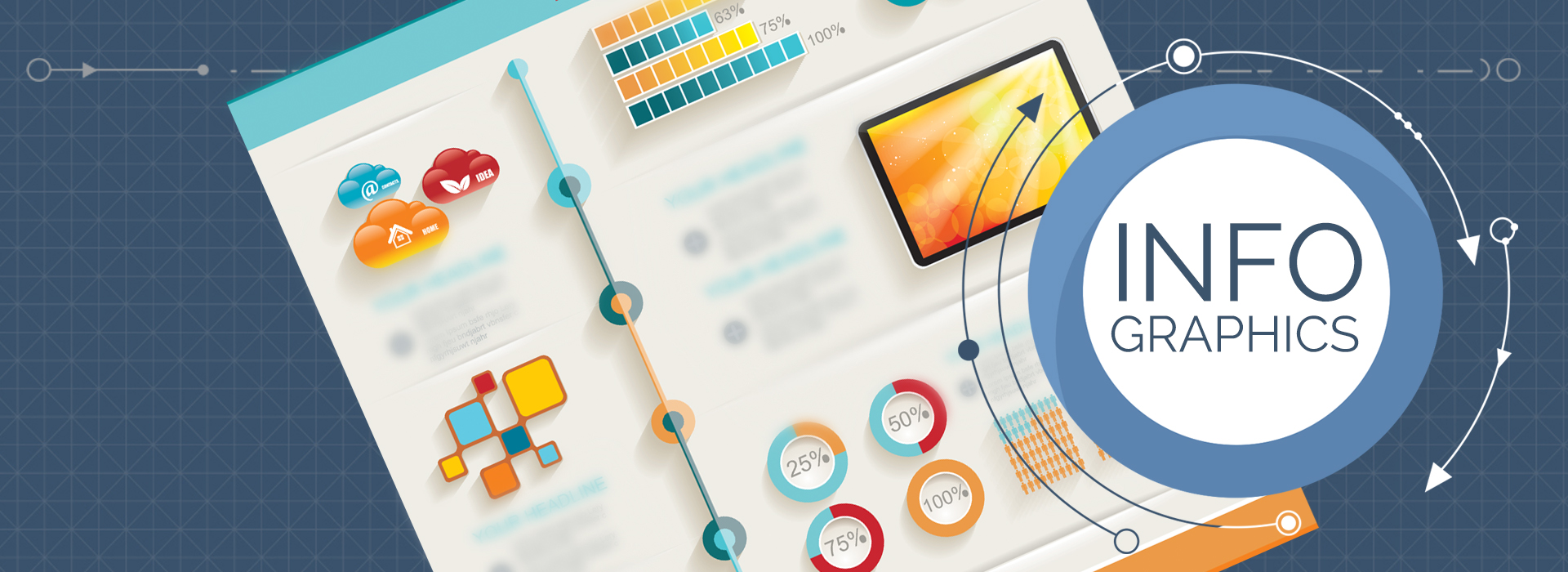
Infographics are a great way to deliver a lot of information quickly while keeping your readers engaged and entertained. They allow you to simplify complex concepts, highlight the steps in a process or reveal facts and stats that command attention. They can also serve another important purpose.
Developed properly, infographics can help lead people to related content that deepens their knowledge and propels their journey forward. Since they’re so sharable, they’re often the first touch point people have with your brand. The best infographics are developed to ensure they aren’t the last. That’s why we consider the infographic to be a shining example of “gateway content,” assets that sit at the top of the funnel and get people on the path of education and engagement.
Since we’ve built a lot of infographics in our day, we’ve picked up a few things that can help make your next one stronger. The following tips come directly from our content managers’ experiences working with our clients, and we hope they help.
1. Begin at the end
When we approach an infographic project, the first thing we think about is the next stop in the content journey – where do we want readers to go when they reach the bottom? It could be a piece of long-form content, a newsletter sign-up page or a free demo. Once we know, we shape the infographic around that CTA and build accordingly.
2. Create a theme
Once you know where your infographic will end, take it from the top and think about your theme. It may be as simple as a “Top 5” list or as elaborate as a solar system depicting the individual features and capabilities of your solution. No matter how basic or sophisticated your theme, make sure it’s relevant to your topic and executed consistently throughout the infographic. That means your copy and design both support it. We’ll dive deeper into that thought in number 5.
3. Have a little fun with it
Most companies have established brand guidelines that help build consistency within their content – which is a really good idea. But sometimes it’s OK to push the limits, and we think infographics are a great example of when that’s appropriate. It’s your chance to feature that splash of orange that’s usually just an accent color or play with your copy a bit. Infographics are a great way to build engagement, and having a little fun can help you make that happen.
4. Keep the word count low
One of the toughest things in content creation is saying a lot with a few words. But with infographics, that’s exactly what you have to do. Lean on the visuals and use your words sparingly to provide clarity and punch. Infographics are best when they can be consumed quickly, and nothing slows things down like a sea of copy. If you find that it’s necessary to use a lot of words to tell the story, it’s possible that the subject matter isn’t suitable for visual format. More on that in a sec.
5. Link your copy and design
Creating a theme and executing it visually is only half the battle with an infographic. To bring the whole thing together, make sure your copy plays well with your design. Section headers and call-outs are a great place to do this. In your space-themed infographic, for example, try a header like “A galaxy of options” or “Bring your network to warp speed.” Don’t overplay it, just sprinkle in enough references so the theme and the visuals feel well integrated.
6. Move the reader down the page
The flow of an infographic is just as important as the copy and the design. As content creators, it’s our job to give readers a reason to keep going and not bail out before they reach our CTA. Keep an eye out for visual roadblocks and dead end copy that give people reasons to stop. Instead, use transition words and make sure there’s a clear visual path from beginning to end.
7. Remember that not everything is infographic-able
Some subject matter just doesn’t lend itself well to being delivered in a visual format. This can be true for new technical concepts that require a back story or topics that just can’t be broken down into small bites or stages. When that happens, try to recognize it quickly and explore alternative content types. In the long run, it’s more productive (and less maddening) to write an article than it is to create an infographic that just doesn’t work.
Lucky for us, there are lots of topics in high tech B2B that are well suited to infographic form. That’s great news, because we love creating them. In fact, infographics might just be our favorite content type to brainstorm, develop and discuss.
If you have an idea for an infographic that you’d like to talk about, drop us a line and let us know how we can help.
